By Tim Brown of Mereen-Johnson Machine Company. Mereen-Johnson provides custom analysis of production needs.
There are many saw choices available for the rough mill area in a typical cabinet or moulding shop. Typically, a shop will start out with a straight line rip saw and they may add another as business grows or they may add a fixed arbor gang saw to add throughput efficiency for the operation.
A gang rip saw can typically process three to four times the material that a straight line rip saw can process with the same labor input. In addition, gang rip saws deliver true parallel strips, eliminating taper cuts associated with single blade straight line saws.
Now, what happens if we add a gang rip saw with a moving blade to this scenario?
To look at how the right saw can impact the yield achieved from the input material, we will process the same random width material through different saw configurations using Mereen-Johnsonís Rip Navigator Optimizing software.
The input material consisted of 1032 board feet of random width red oak with an average length of 8.56 ft. The average width was 5.63 inches and had an average side bend of 0.321 inches.
A cut bill was created using 2-1/4″, 2-1/2″, 2-3/4″, 3-1/4″ and 3-5/8″ as the needed widths. The sizes would be used for stiles, rails and staves for panel glue up.
Letís start with a 24″ fixed arbor gang rip saw with the arbor configured as shown in figure (1). We will process our bunk of material designated by PO-1006 through this saw and the results are shown in figure (2). The yield was 80.3%, but as you can see not all required widths were cut.
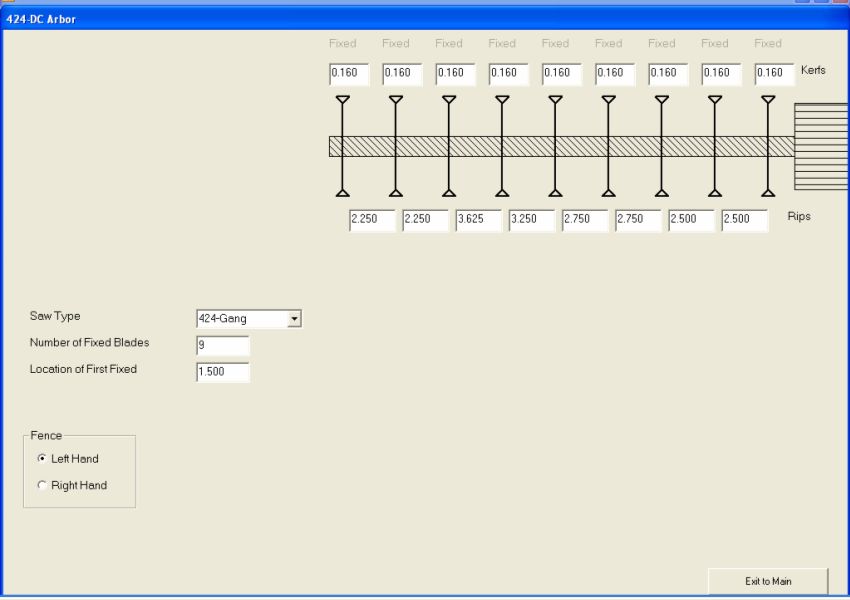
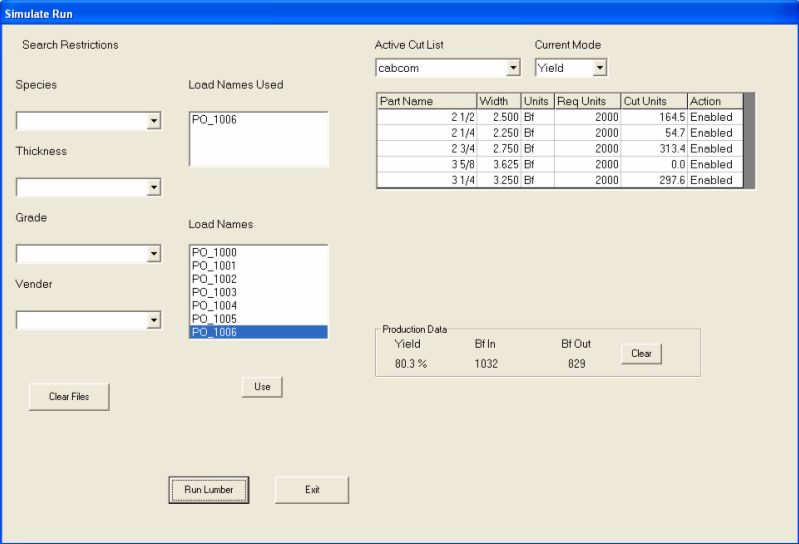
Running the same lot of material and cut bill through a 12″ gang rip saw with one moving blade and three fixed pockets (see figure 3) produces a yield of 85.4% (see figure 4). Next, we simulated a 12″ gang rip saw with one moving blade and added a random width panel part to our cut bill. The random width part could be from 1″ to 5″ in width. This part would only be cut if the fixed part yield fell below 90%. This increased our yield to 89.3% (see figure 5).
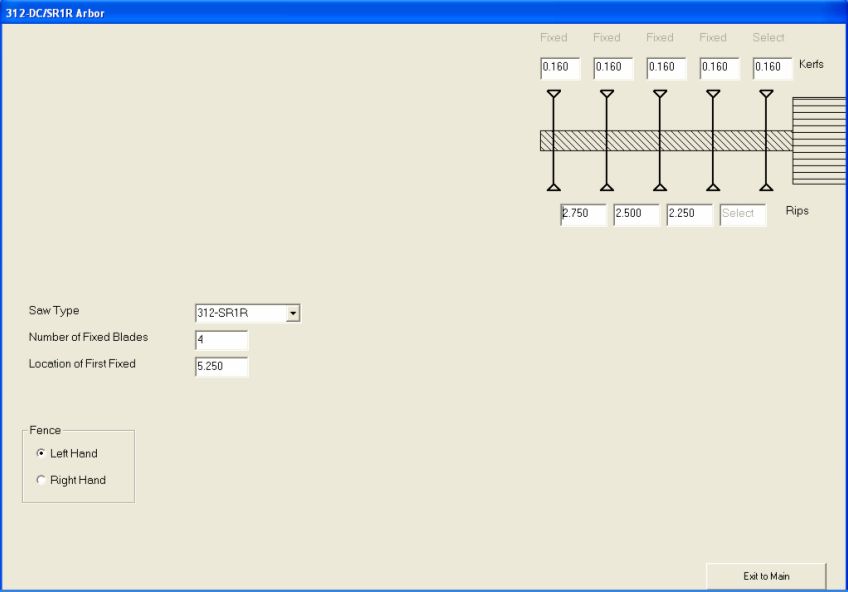
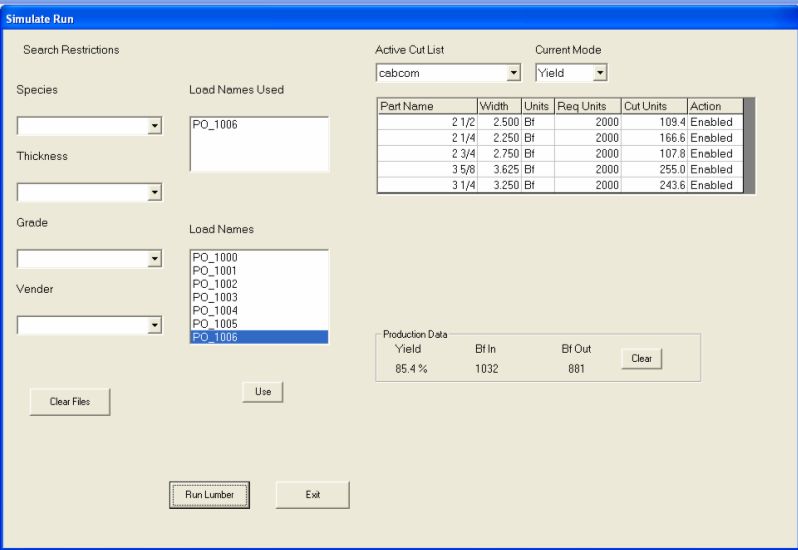
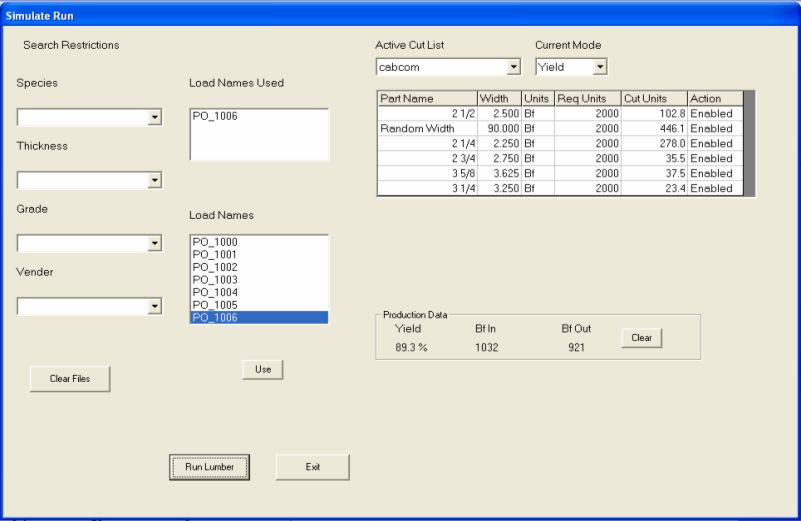
What happens if we add a second moving blade and have one fixed pocket of 2.250″ on the arbor to the same cut bill? The two moving blade saw yields 90.5% (see figure 6).
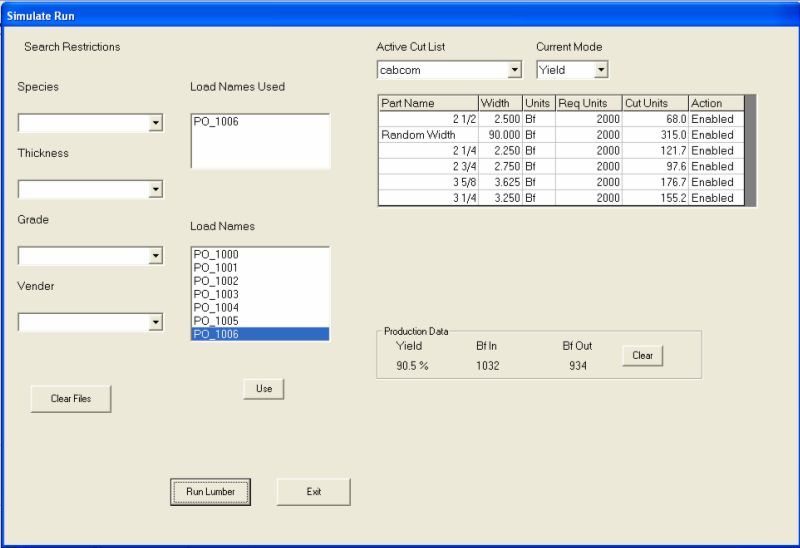
A summary of our results shows that a yield increase of 5.1% was achieved by going from a 24″ fixed arbor to a 12″ wide moving blade gang rip saw. By adding a requirement for random width parts, we increased our yield another 3.9% by using the moving blade saw to produce those random width staves.
A second moving blade gained another 1.2% in yield for the same material input. A total gain in yield of 10.2% was achieved in this simulation by using a moving blade rip saw and adding a random width part to our cut bill. This can be a substantial amount of money savings by using the correct rip saw.
By Tim Brown of Mereen-Johnson Machine Company. Mereen-Johnson provides custom analysis of production needs.